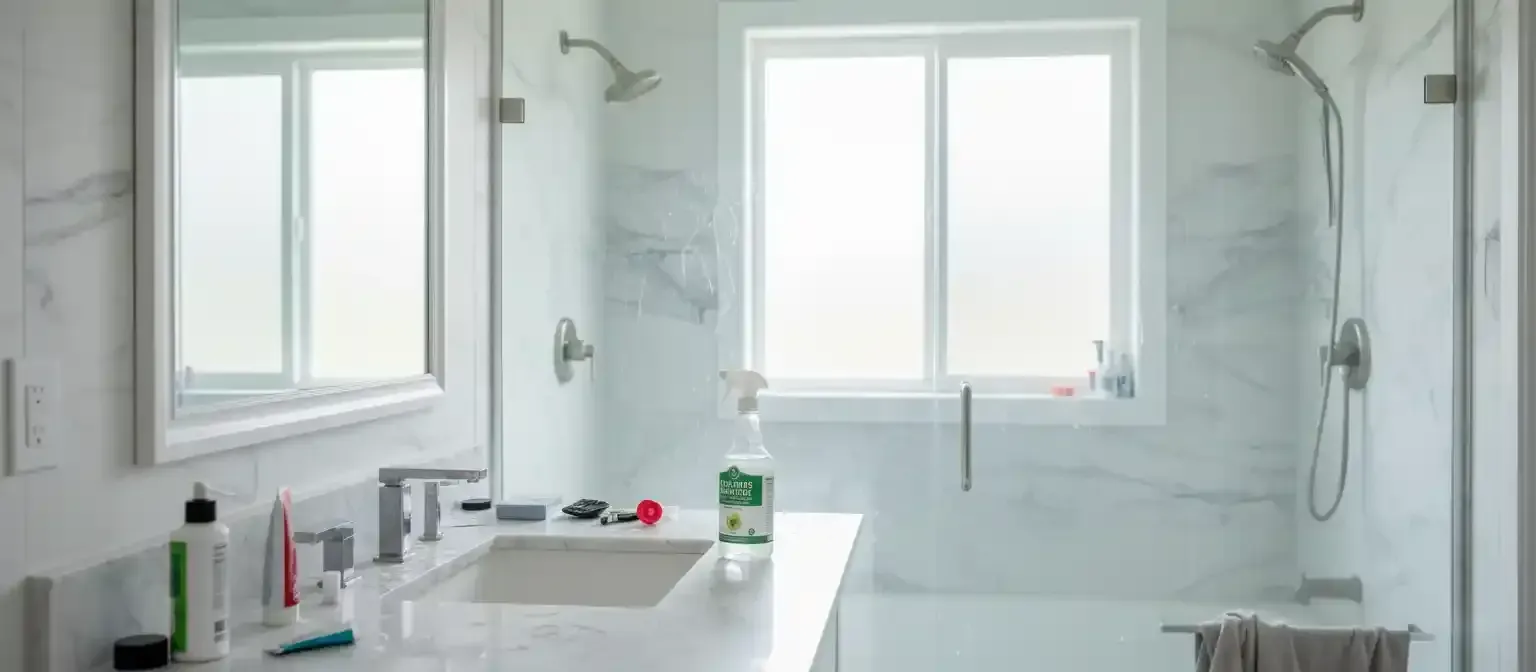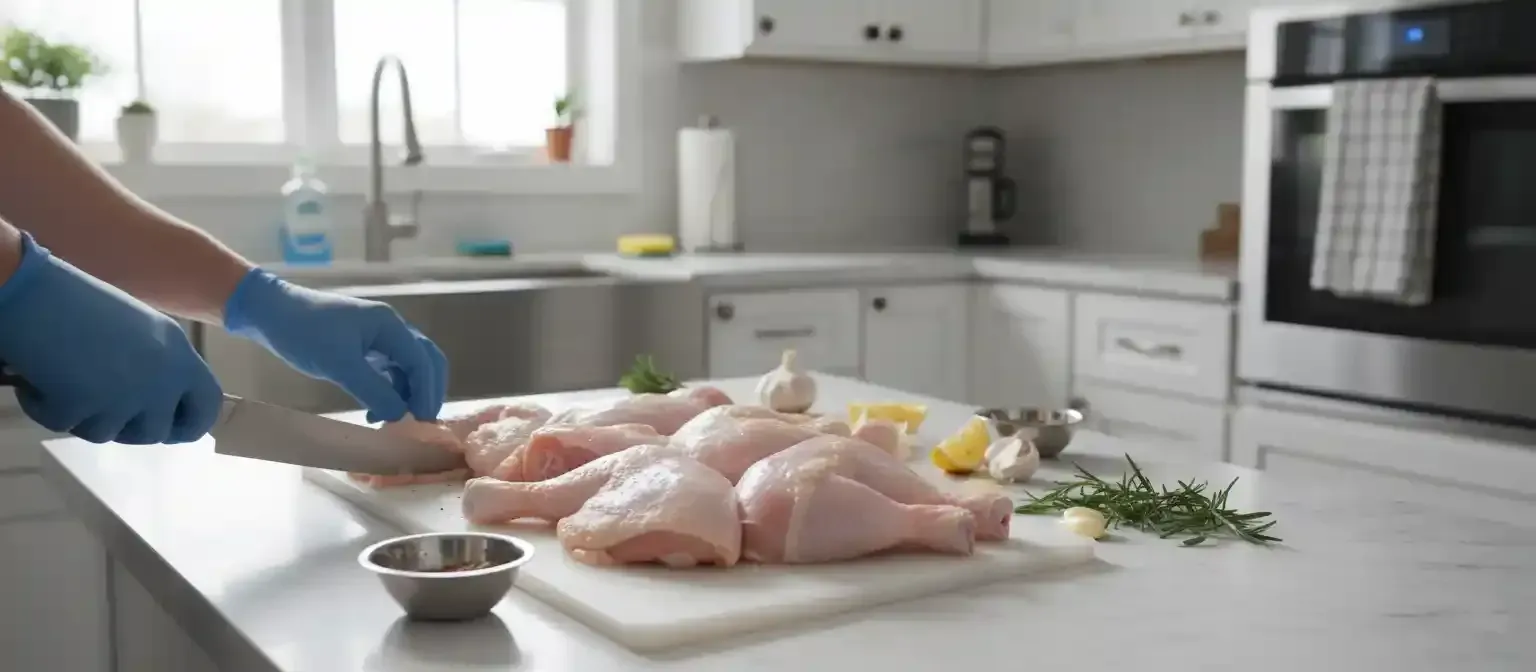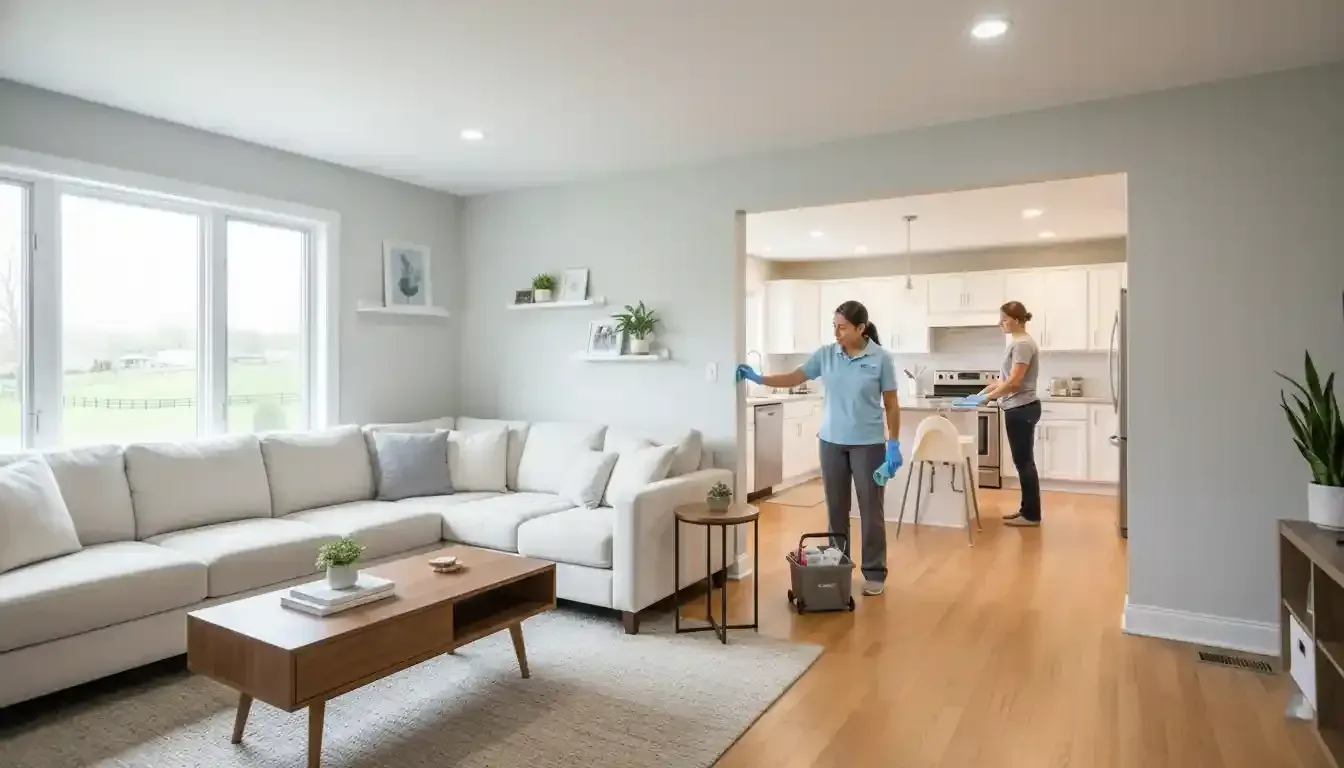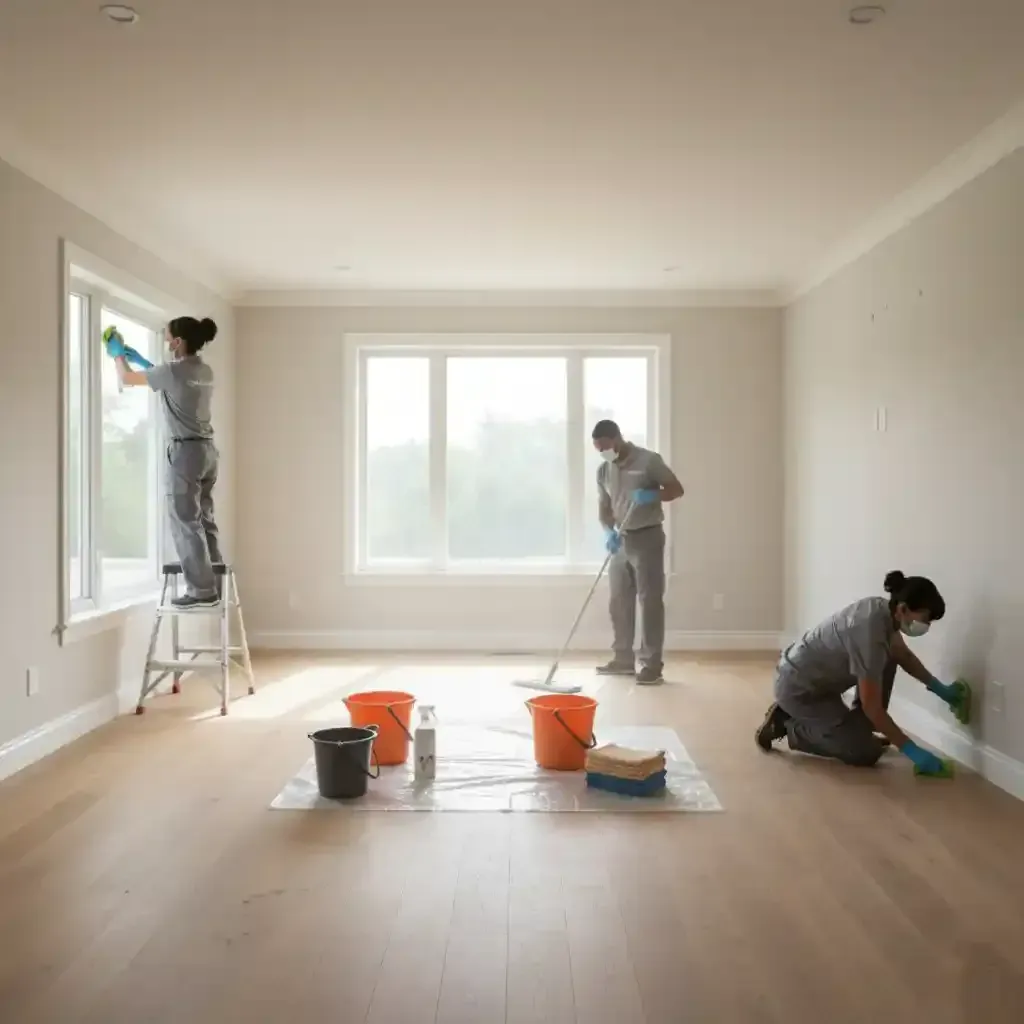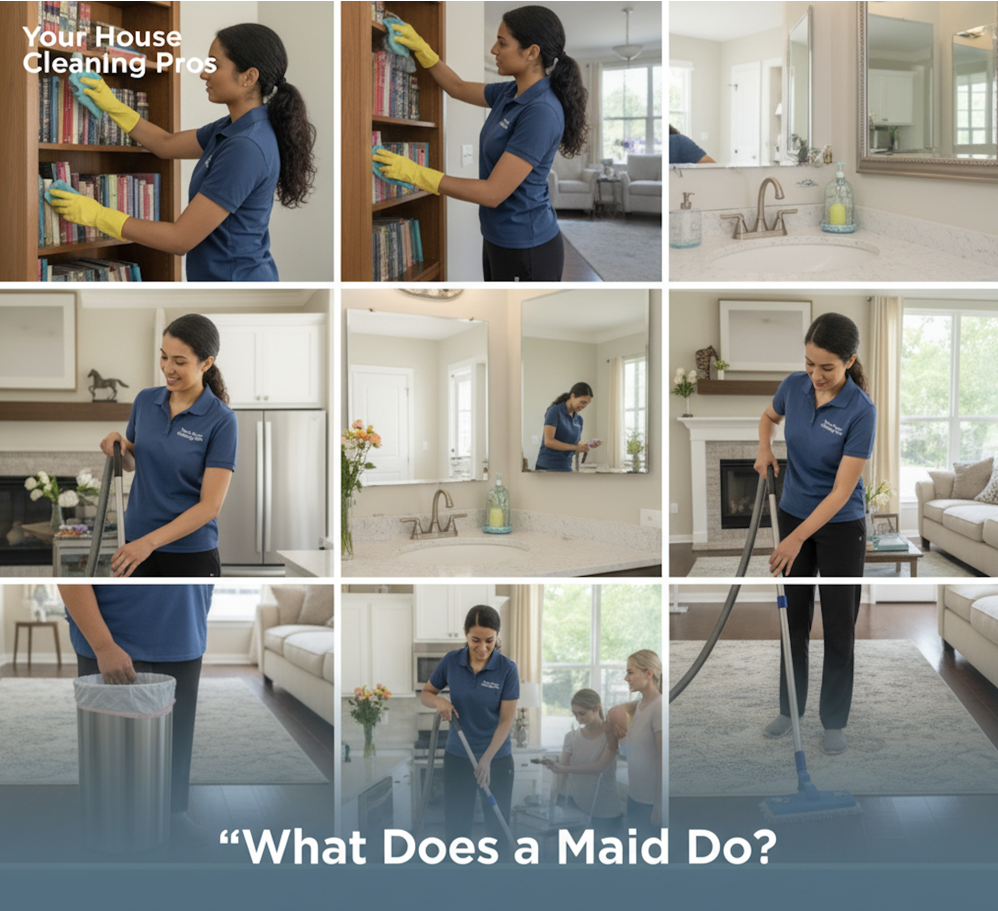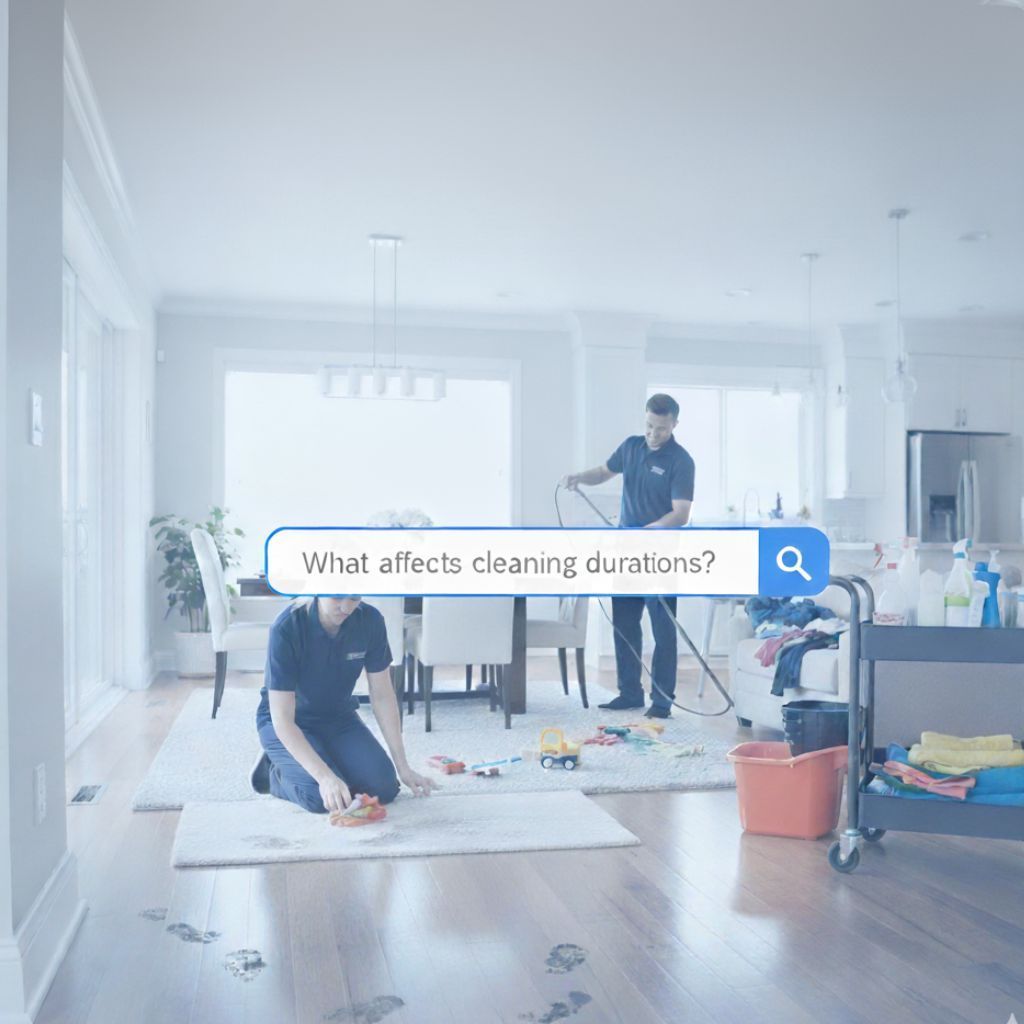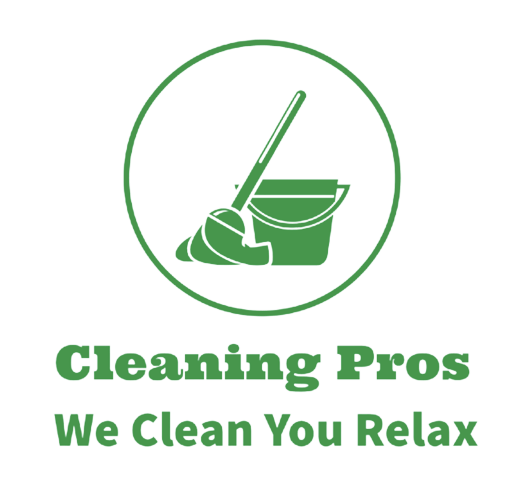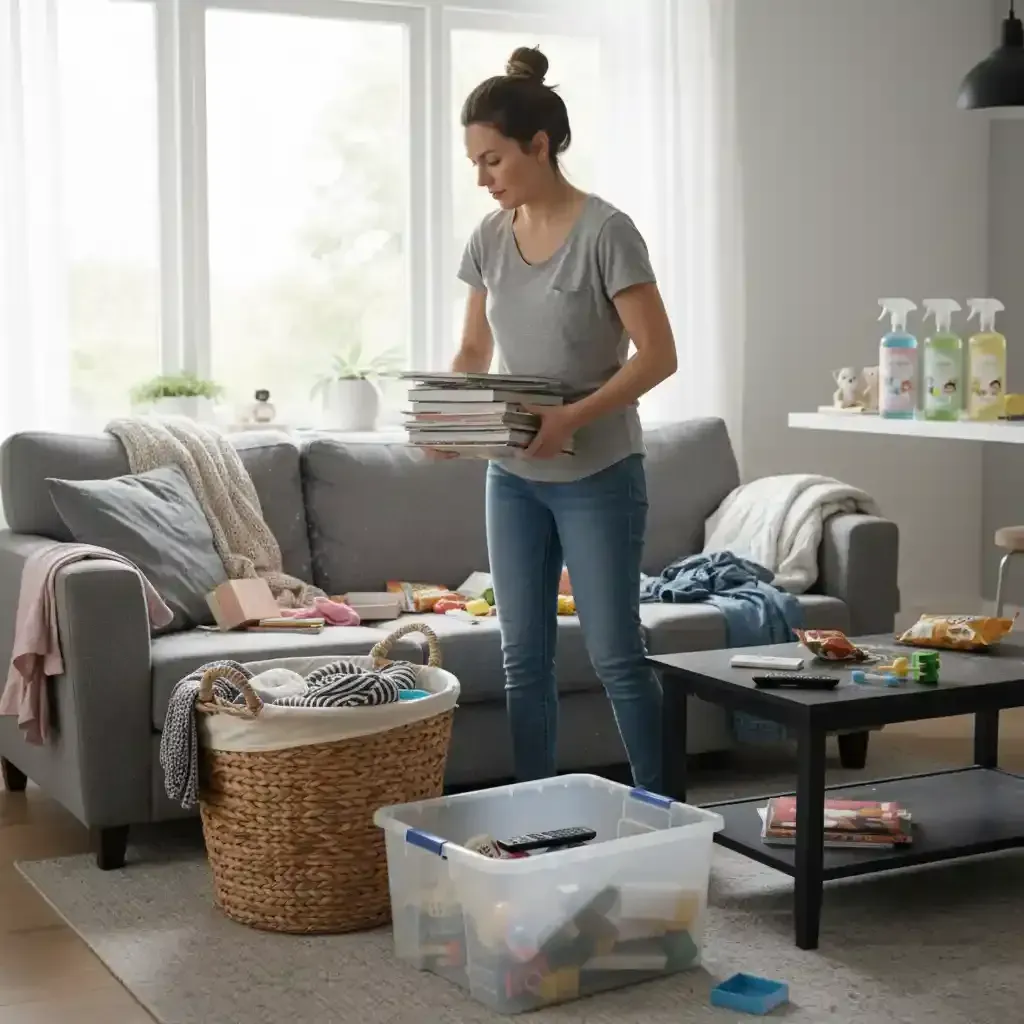What does a standard house cleaning service actually include? [A complete guide]
A standard house cleaning service is designed for regular maintenance to keep your home consistently clean and tidy. It typically includes dusting surfaces, vacuuming and mopping floors, cleaning and sanitizing bathrooms (toilets, sinks, showers), and wiping down kitchen counters, sinks, and appliance exteriors. It's the recurring upkeep that prevents dirt and grime from building up over time.
The Foundation: What a Standard House Cleaning Checklist Covers
When you hire a professional cleaning service for a "standard" or "maintenance" clean, you're investing in consistency. The goal isn't to perform a miraculous transformation every visit, but rather to maintain a high level of cleanliness so you can reclaim your time and enjoy your home. Think of it as hitting the reset button on a weekly or bi-weekly basis.
While every company has its own specific checklist, a professional standard clean almost always covers the same core areas. Here’s a practical, room-by-room breakdown of what you can typically expect.
In All Living Areas & Bedrooms:
- Dusting Surfaces: This includes all accessible surfaces like end tables, coffee tables, dressers, nightstands, and shelves. Dusting picture frames, lampshades, and window sills is also standard.
- Wiping & Sanitizing: Light switches and door knobs are high-touch areas that will be wiped down.
- Floors: All carpets and rugs will be thoroughly vacuumed. Hardwood, tile, or laminate floors will be swept and mopped.
- Mirrors & Glass: Cleaning interior glass doors (like on a cabinet) and mirrors.
- Trash Removal: Wastebaskets will be emptied, and the liners replaced.
- General Tidying: Light straightening, such as fluffing couch pillows or making beds (if requested).
In the Kitchen:
- Countertops & Backsplash: Wiped down and sanitized to remove crumbs, spills, and bacteria.
- Appliance Exteriors: The outside of the refrigerator, dishwasher, and oven will be wiped clean of smudges and fingerprints. The stovetop will be cleaned.
- Microwave: The inside and outside of the microwave will be cleaned.
- Sink: The sink and faucet will be scrubbed, sanitized, and polished.
- Floors: Swept and mopped to handle daily traffic and spills.
- Trash: The kitchen trash will be emptied.
In the Bathrooms:
- Toilets, Sinks, Tubs & Showers: These are the highest priority. They will be thoroughly cleaned and sanitized, from the toilet bowl and base to the sink basin, faucets, and shower walls.
- Mirrors & Fixtures: Vanity mirrors will be cleaned to a streak-free shine, and fixtures like faucets and towel holders will be polished.
- Countertops: Wiped down and sanitized.
- Floors: Sanitized and mopped.
- Trash: Emptied and liners replaced.
-
Drawing the Line: Standard Clean vs. Deep Clean
Understanding the distinction between a standard clean and a deep clean is one of the most important steps in hiring a service that meets your expectations. A standard clean is about maintenance; a deep clean is about restoration. Many professional services require an initial deep clean for new recurring clients to establish a baseline of cleanliness that can then be easily maintained.
The core difference is the level of detail and intensity. A deep clean is officially defined as a "top-to-bottom, thorough cleaning of a space, covering all surfaces from ceilings and walls to floors according to facility management standards." It tackles the accumulated grime and dirt that a standard clean isn't designed to address. Let's compare the tasks side-by-side.
| Task Area | Standard Cleaning (Maintenance) | Deep Cleaning (Restoration) |
|---|---|---|
| Baseboards & Trim | Usually a quick dusting. | Individually hand-wiped and scrubbed to remove scuffs and grime. |
| Appliances | Exterior surfaces wiped down. Microwave interior/exterior cleaned. | Inside of the oven and refrigerator cleaned. Behind/underneath appliances cleaned (if accessible). |
| Windows & Blinds | Window sills dusted. | Interior windows washed, tracks cleaned, and individual blind slats wiped down. |
| Doors & Door Frames | Spot cleaned for visible smudges. | Wiped down entirely to remove fingerprints and scuffs. |
| Light Fixtures & Ceiling Fans | Lightly dusted if reachable with an extension duster. | Hand-wiped to remove all accumulated dust. |
| Grout & Tile | Shower walls and floors are cleaned and sanitized. | Grout is specifically targeted and scrubbed to remove buildup and mildew. |
What's Not Typically Included in a Standard Clean?
Managing expectations is key to a happy relationship with your cleaning provider. A standard service does not cover everything. Tasks that require specialized equipment, more time, or are outside the scope of interior maintenance are almost always considered add-ons or separate services. For example, even standard government custodial services, which are quite comprehensive, often list services like overall carpet shampooing as a "reimbursable service" that costs extra.
Other tasks commonly excluded from a standard clean include:
- Exterior Cleaning: This includes washing exterior windows, pressure washing siding or driveways, and cleaning patios. These tasks are often considered distinct building or grounds cleaning services; for instance, state regulations sometimes categorize pressure washing buildings as a taxable service separate from interior janitorial work.
- Heavy-Duty Organization: While cleaners will tidy up, they are not professional organizers. Decluttering closets, pantries, or entire rooms is a separate service.
- Specialty Services: Tasks like chimney sweeping, air duct cleaning, or even swimming pool maintenance are specialized fields requiring different expertise and equipment.
- Handling Biohazards: Cleaning up mold, rodent droppings, or other hazardous materials requires specialized training and protective gear.
- Lifting Heavy Furniture: For insurance and safety reasons, cleaners will typically not move heavy furniture to clean behind or underneath it.
Understanding the "Why": Key Factors That Influence Your Service
Choosing a cleaning service involves more than just looking at a checklist. Several critical factors determine the price, scope, and ultimate success of your service. Being informed about these elements empowers you to make a confident decision and find a provider who truly fits your needs.
Cost & Pricing: What Are You Paying For?
The cost of a house cleaning service is rarely one-size-fits-all. Professional companies invest in insurance, quality supplies, transportation, and, most importantly, paying their employees a fair, living wage. These elements are factored into the price, ensuring you receive a reliable and high-quality service. The primary variables that affect your quote are:
- Home Size: The larger the square footage and the more bathrooms, the more time and effort are required.
- Frequency: A weekly clean will have a lower price per visit than a monthly clean because less grime builds up between visits.
- Initial Condition: A home that hasn't been professionally cleaned in a while will require more work initially, which is why a first-time deep clean is often recommended.
- Customization: Adding services like cleaning inside the oven or refrigerator will increase the cost.
This leads to a common question: "What can a house cleaner do in 3 hours?" The answer depends entirely on these factors. In a small, well-maintained apartment, a cleaner might complete a full standard clean in that time. In a large family home, 3 hours might be enough to focus on the highest-priority areas like the kitchen and two bathrooms. A transparent provider will discuss this with you to set realistic goals for the time booked.
Provider Type: Professional Company vs. Independent Cleaner
One of the biggest decisions you'll make is whether to hire an established cleaning company or an independent individual. Both have their merits, and the right choice depends on your priorities—be it cost, security, or convenience. There are clear trade-offs to consider.
| Factor | Professional Cleaning Company | Independent Cleaner |
|---|---|---|
| Insurance & Bonding | Almost always insured and bonded, protecting you from liability for accidents or theft. | May or may not be insured. The homeowner may be liable for injuries that occur on their property. |
| Vetting & Training | Employees are typically background-checked and professionally trained on specific methods and products. | Vetting is the homeowner's responsibility. Training and experience can vary widely. |
| Reliability & Scheduling | If your regular cleaner is sick, the company sends a substitute. Scheduling is handled professionally. | If the cleaner is sick or on vacation, your cleaning is likely canceled. Scheduling is less formal. |
| Cost | Generally higher due to overhead costs like insurance, payroll taxes, supplies, and employee wages. | Often lower as they have minimal overhead. Pricing can be more flexible. |
| Supplies & Equipment | Provide their own professional-grade, tested supplies and equipment. | May use the homeowner's supplies or bring their own, which may vary in quality. |
Making the Right Choice for Your Needs
There is no single "best" cleaning solution; there is only the best solution for you. Your lifestyle, budget, and specific goals will determine the ideal service and provider. Let’s break it down based on a few common scenarios.
For the Busy Professional or Family
Best Fit: A recurring (weekly or bi-weekly) standard cleaning service from a professional company.
Why it Works: For those juggling demanding careers, childcare, and a desire for weekend freedom, time is the most valuable commodity. A professional company offers maximum reliability. You don't have to worry about a cleaner calling in sick before a dinner party or spending time vetting and managing an individual. The consistent, scheduled maintenance keeps the home in a perpetual state of "guest-ready," reducing daily stress and freeing up precious time for family, hobbies, or simple relaxation.
For the Budget-Conscious Homeowner
Best Fit: A bi-weekly or monthly standard clean, potentially from a well-vetted independent cleaner.
Why it Works: If your primary concern is cost, an independent cleaner often provides the most affordable option. Spacing out services to a bi-weekly or monthly schedule makes the investment more manageable. This approach requires more due diligence from you—checking references, verifying insurance if possible, and clearly communicating expectations—but the potential cost savings can be significant. It's a great middle-ground for getting professional help without a major weekly expense.
For the One-Time Service Seeker (Move-In/Out, Event Prep)
Best Fit: A one-time deep clean from a professional company.
Why it Works: Situations like moving out, moving into a new home, or preparing for a major holiday party demand a level of thoroughness that goes far beyond a standard clean. You need a guaranteed, top-to-bottom result. A professional company is best equipped for this. They have the trained teams, proper supplies, and a detailed checklist to ensure every corner is addressed, from the inside of cabinets to the top of the ceiling fans. This is a results-oriented task, and the accountability and resources of a company are invaluable for ensuring the job is done right the first time.
Ultimately, the key to a successful house cleaning experience is clear communication and a shared understanding of the scope of work. A trustworthy provider will take the time to walk you through their checklist, discuss your specific priorities, and provide a transparent quote based on your home's unique needs. This initial consultation is not a sales pitch; it's a foundational step to building a partnership based on trust and delivering results that truly make your life easier.
At Cleaning Pros Lexington KY, we believe in this transparent, consultative approach. We work with you to customize a cleaning plan that fits your lifestyle and budget, ensuring our professional, vetted team delivers consistent quality every time. For a personalized assessment and a free, no-obligation quote to see how our services can give you back your time, contact our expert team in the Lexington area today.

